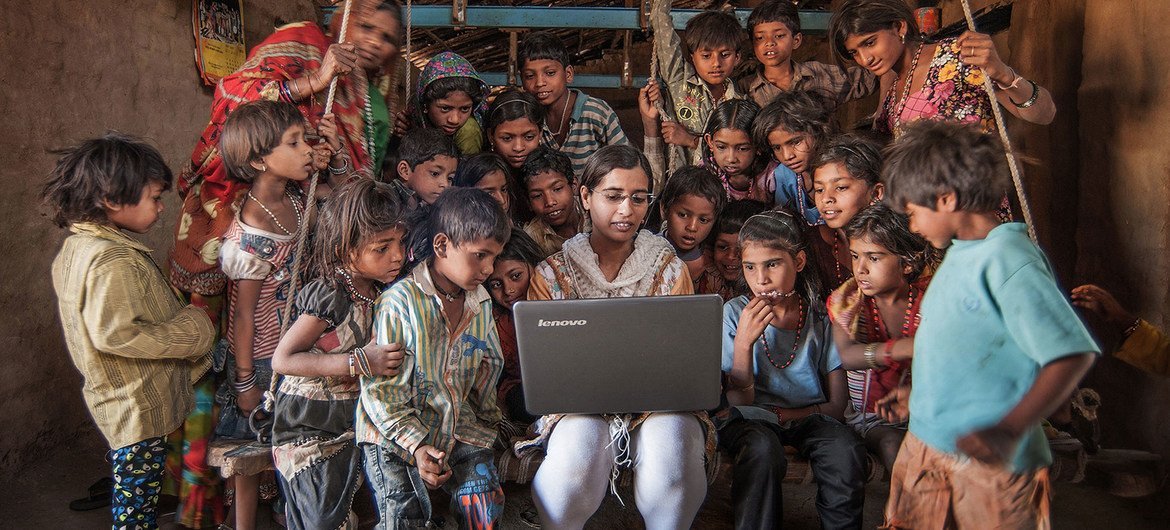In an era where daily life is increasingly migrating online, from banking and shopping to education and healthcare, access to technology is no longer a luxury but a fundamental necessity. Yet, a significant portion of the population remains disconnected, stranded on the wrong side of the “digital divide.” This term describes the gap between individuals who have reliable access to modern information and communication technology and those who do not.
According to a 2025 Ofcom report, around 5% of the UK population has no internet access. While that percentage may seem small, it amounts to approximately 2.8 million people. This inequality extends beyond simply owning a smartphone; it encompasses the quality of internet connectivity, the availability of suitable devices, and the digital literacy required to navigate an online world. What was once a matter of convenience has now become a critical barrier to social and economic inclusion.
Impact on Education
Nowhere is the impact of this divide more pronounced than in the field of education. The widespread shift to blended and online learning models, accelerated by the COVID-19 pandemic, has exposed deep-seated inequalities among students. For those with high-speed broadband and personal laptops, the transition was relatively smooth. For others, however, the reality was starkly different. Students relying on patchy mobile data, sharing a single family computer, or living in areas with poor infrastructure found themselves at a significant disadvantage.
This digital barrier directly affects academic performance. Without dependable internet, students struggle to attend virtual lectures, access online research materials, submit coursework, or collaborate with their peers. The gap creates a two-tier educational experience, where a student’s success can be determined not just by their academic ability, but by the strength of their Wi-Fi signal. This issue is particularly acute in rural parts of the UK, like Cumbria or the Scottish Highlands, where high-speed internet is far from guaranteed, compared to more connected urban centres.
Access to Services and Opportunities
The digital divide’s repercussions extend far beyond the classroom. An increasing number of essential services are now “digital by default.” Registering with a GP, applying for government support, booking travel, and even participating in local community consultations often require online access. Those without it are left navigating complex and often diminishing offline alternatives, creating delays and adding unnecessary stress.
This digital exclusion also limits access to life-changing opportunities. Internships, graduate schemes, scholarships, and volunteer positions are almost exclusively advertised and applied for online. Students without the means to regularly browse these opportunities or participate in virtual interviews risk being overlooked entirely. The inability to build a professional online presence or network through digital platforms further compounds this disadvantage, creating a cycle of missed chances that can shape a young person’s future.
Employment and Career Prospects
In today’s job market, digital literacy is considered a core competency, as vital as numeracy and literacy. Most employers expect candidates to apply online, possess proficiency in standard office software, and be comfortable with digital communication tools. For those who have grown up with limited access to technology, developing these skills can be a significant hurdle.
This creates a formidable barrier to entering the workforce. A CV that cannot be emailed or a candidate who is unfamiliar with video conferencing software may be dismissed before their qualifications are even considered. For those already in employment, a lack of digital skills can hinder career progression, preventing them from taking on roles that require greater digital responsibility. As automation and technology continue to reshape industries, the digital divide threatens to leave a significant portion of the workforce behind.
Bridging the Gap: Supporting the Next Generation
In response to these challenges, a new model for digital inclusion is gaining traction across the UK’s major cities: the community creative hub. These spaces, often established in accessible urban locations, are designed to provide the tools and connectivity that individuals may lack at home. They serve a diverse audience, from students needing a quiet place to study to remote professionals requiring reliable internet for a video conference, and freelancers seeking collaborative environments.
Equipped with high-speed Wi-Fi, high-spec workstations, bookable meeting rooms, and printing facilities, these hubs level the playing field. They offer a tangible solution for those who cannot afford expensive co-working memberships or the latest technology. By providing these resources, often at a low cost or for free, they empower people to apply for jobs, complete their studies, and develop new digital skills in a supportive environment.
A key part of the solution is being driven by student accommodation providers, who increasingly offer guaranteed high-speed Wi-Fi as a standard amenity. This initiative is particularly impactful in major university cities. In modern Manchester student housing, for example, reliable digital access is considered a prerequisite for academic life. However, this urban standard starkly contrasts with the reality in more rural regions, where poor infrastructure can leave students digitally isolated. This disparity highlights a crucial responsibility: universities and accommodation providers must collaborate to ensure all students, whether in a bustling city or a quieter campus town, are equipped with the digital access vital for their success, creating a level playing field where potential isn’t limited by postcode.
Looking Ahead
Tackling digital inequality is one of the defining challenges of our time. It is not merely an issue of technology but one of social justice and equal opportunity. Fair access to the digital world is fair access to education, essential services, and viable career prospects. While initiatives from community hubs offer a powerful solution, they are part of a much larger picture.
A concerted effort is required from governments, educational institutions, and technology companies to ensure that robust digital infrastructure reaches every corner of the country. Programmes promoting digital literacy and providing access to affordable devices are equally vital. By working together to close the digital divide, we can build a more equitable society where everyone has the chance to learn, thrive, and succeed in an increasingly connected future.

